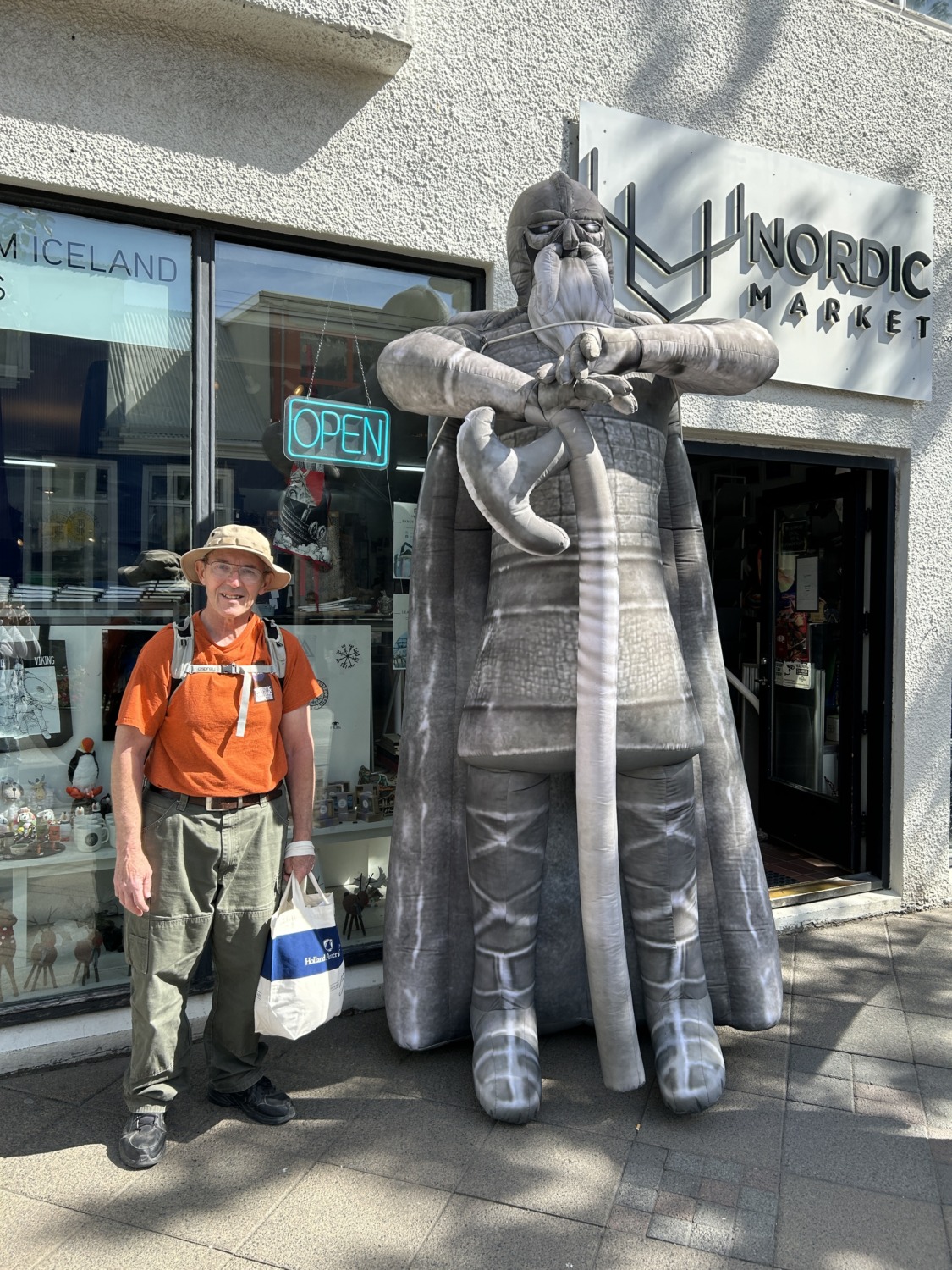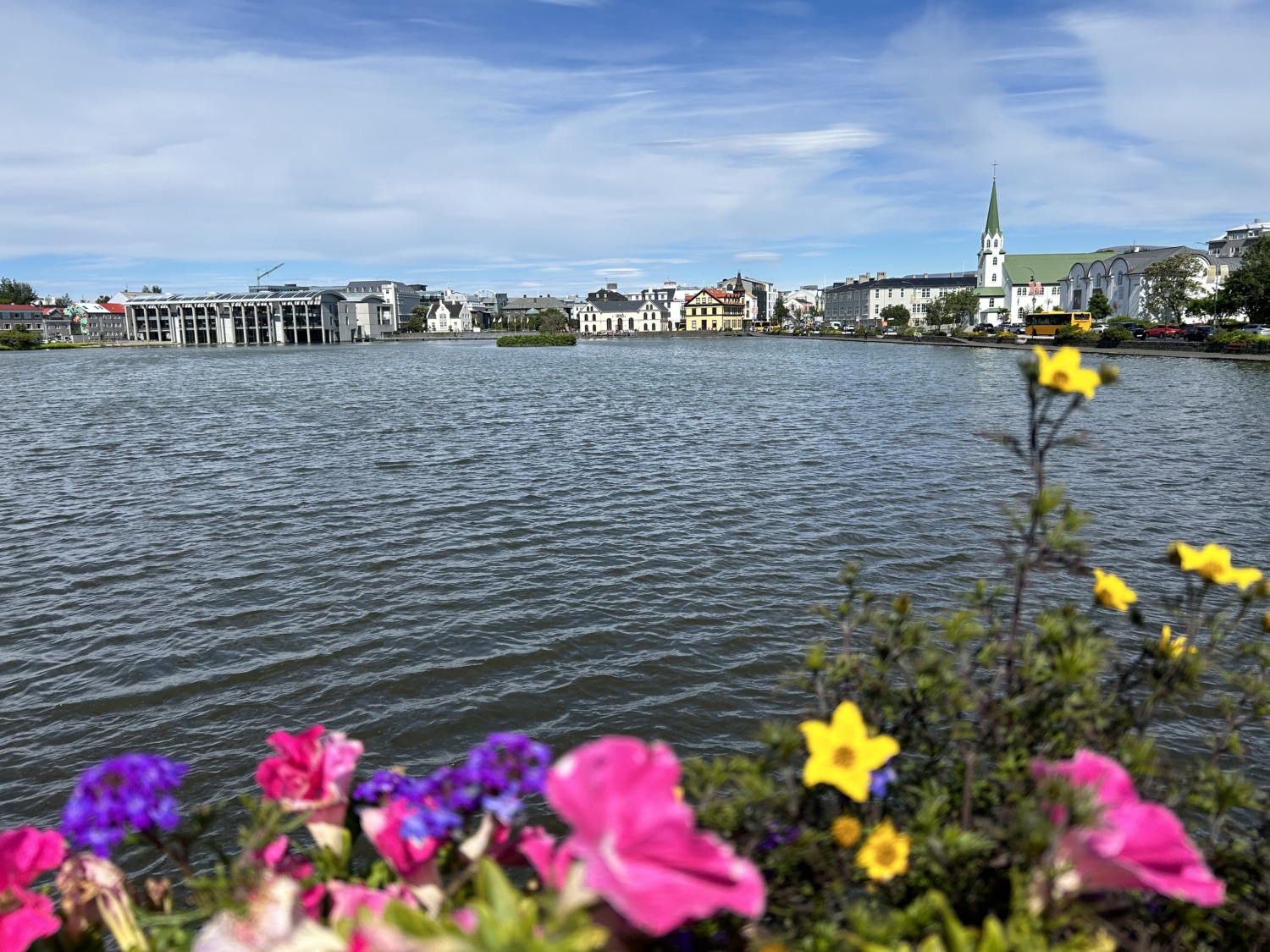After seeing all kinds of natural wonders, Tom and I turned our attention to Reykjavik on our last day in Iceland. Reykjavik is the capital of Iceland and has 1/3 of the population of the small, island country. Although it is the world’s most northern capital city, it has a mild climate due to its location on the coast and the Gulf Stream. It never gets really cold in the winter or hot in the summer. On July 6, the day we were there, the high was 56. All the natives we talked to said it was the nicest kind of day they get in the summer.
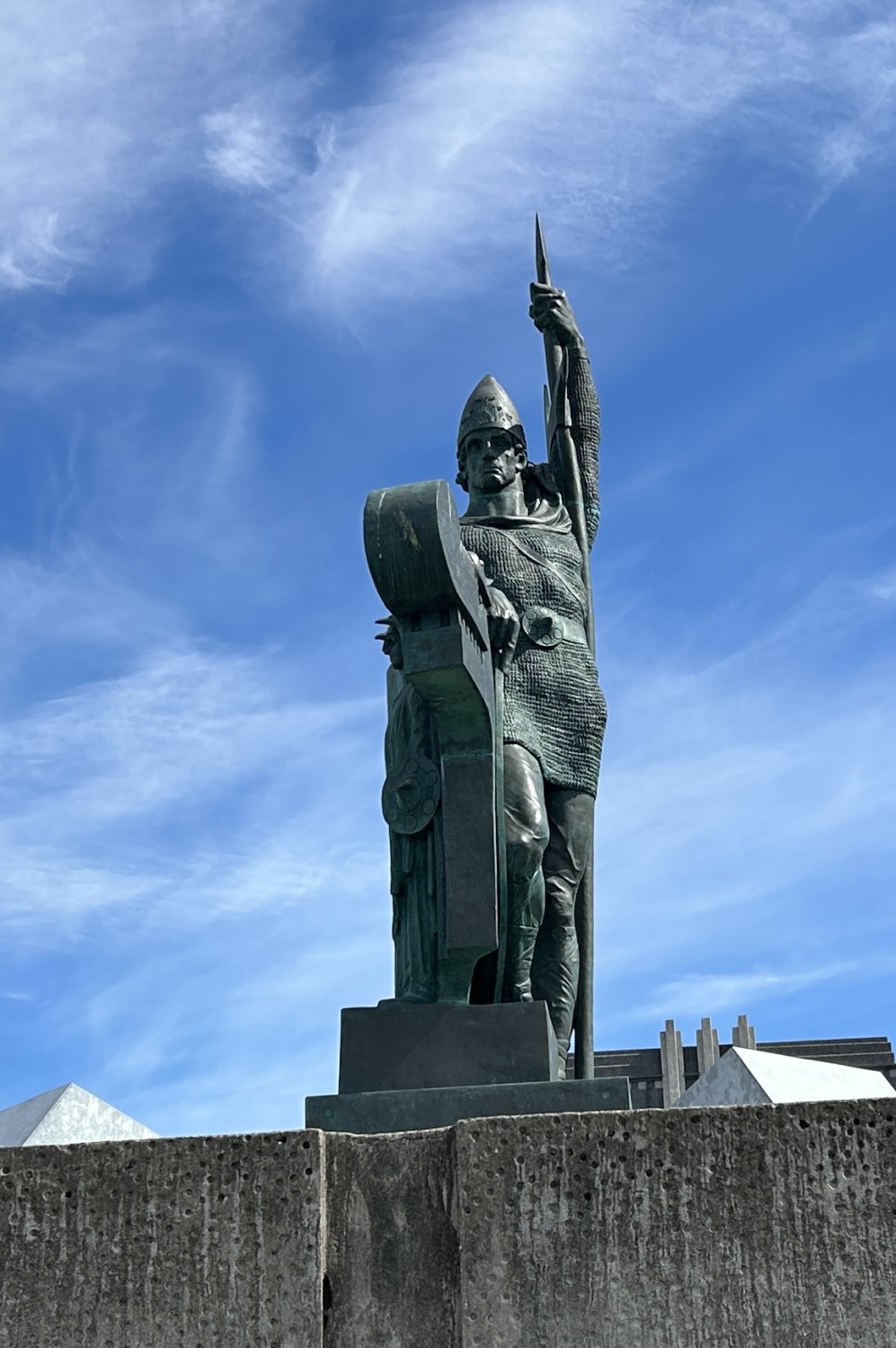
The first settler in Iceland was Ingólfr Arnarson, together with his wife Hallveig Fróðadóttir and foster brother Hjörleifr Hróðmarsson. According to tradition, they settled in Reykjavík in 874. Reykjavik didn’t really take off as a city until Iceland gained its independence from Denmark in 1944. At that time Reykjavik became the seat of government in the country. It has continued to grow ever since and is a hub of the tourist industry. In 2023 over three million tourists came to Iceland – in a country with fewer than 400,000 people.
Icelanders handle the tourists very well. Downtown Reykjavik is a good example. The day Tom and I spent in Reykjavik, there were four cruise ships in town. The town runs a shuttle from the cruise port to the edge of downtown. The shops take it from there. There are tons of restaurants, shops, bars, parks, and statues in the downtown area.
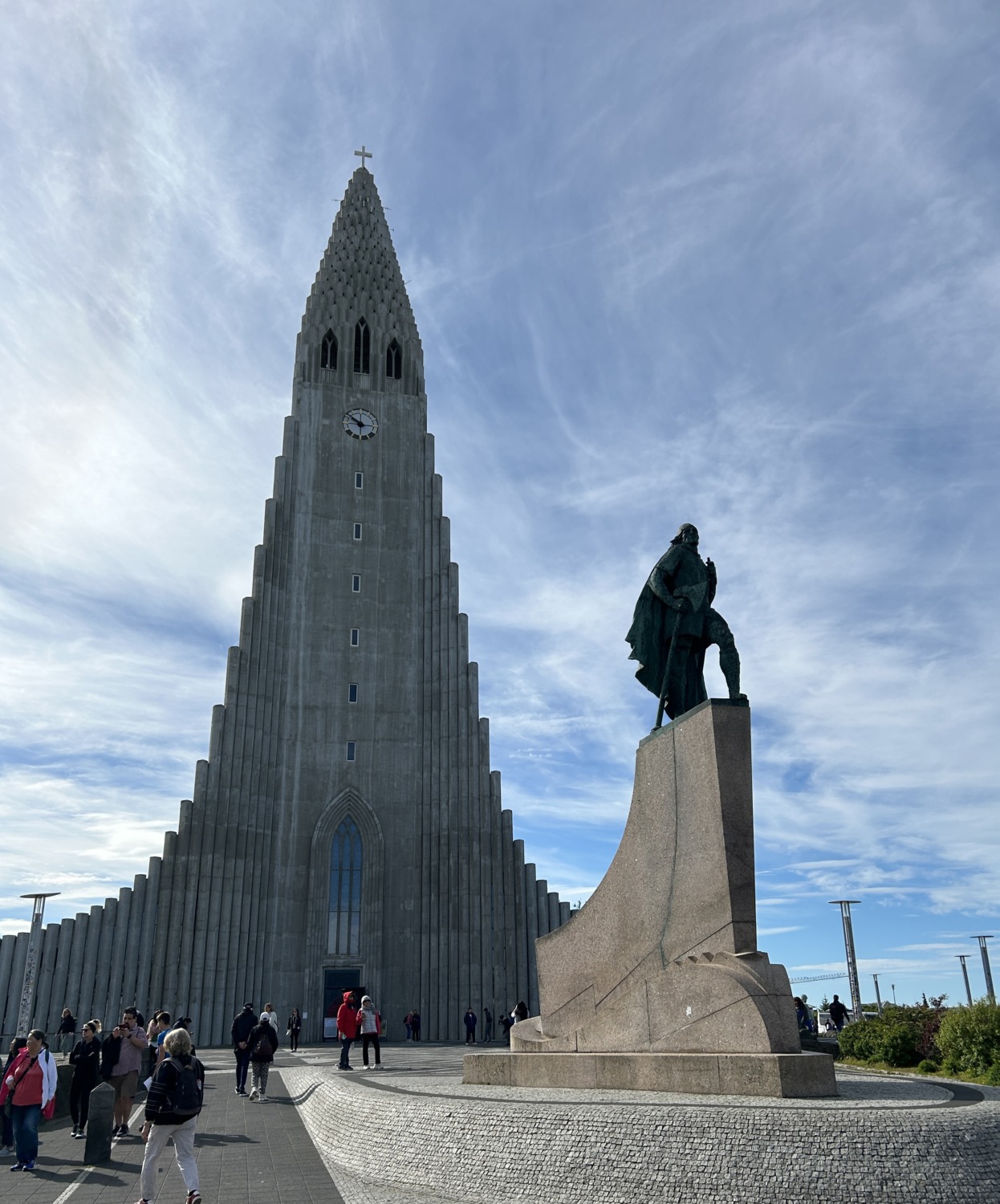
Reykjavik has some interesting architecture. It is extremely modern. The oldest house in Reykjavik was built in 1762, but there aren’t very many old places. The most startling example of the modern architecture is the Hallgrímskirkja, which is the Lutheran church at the center of the city. Not only is it the largest church in Iceland, it is also the tallest. And it sits on top of the highest hill in the city. Consequently you can see the Hallgrímskirkja from all over. Tom and I headed there first, and it wasn’t hard to find. We just walked up until we spotted it and then headed straight for it.
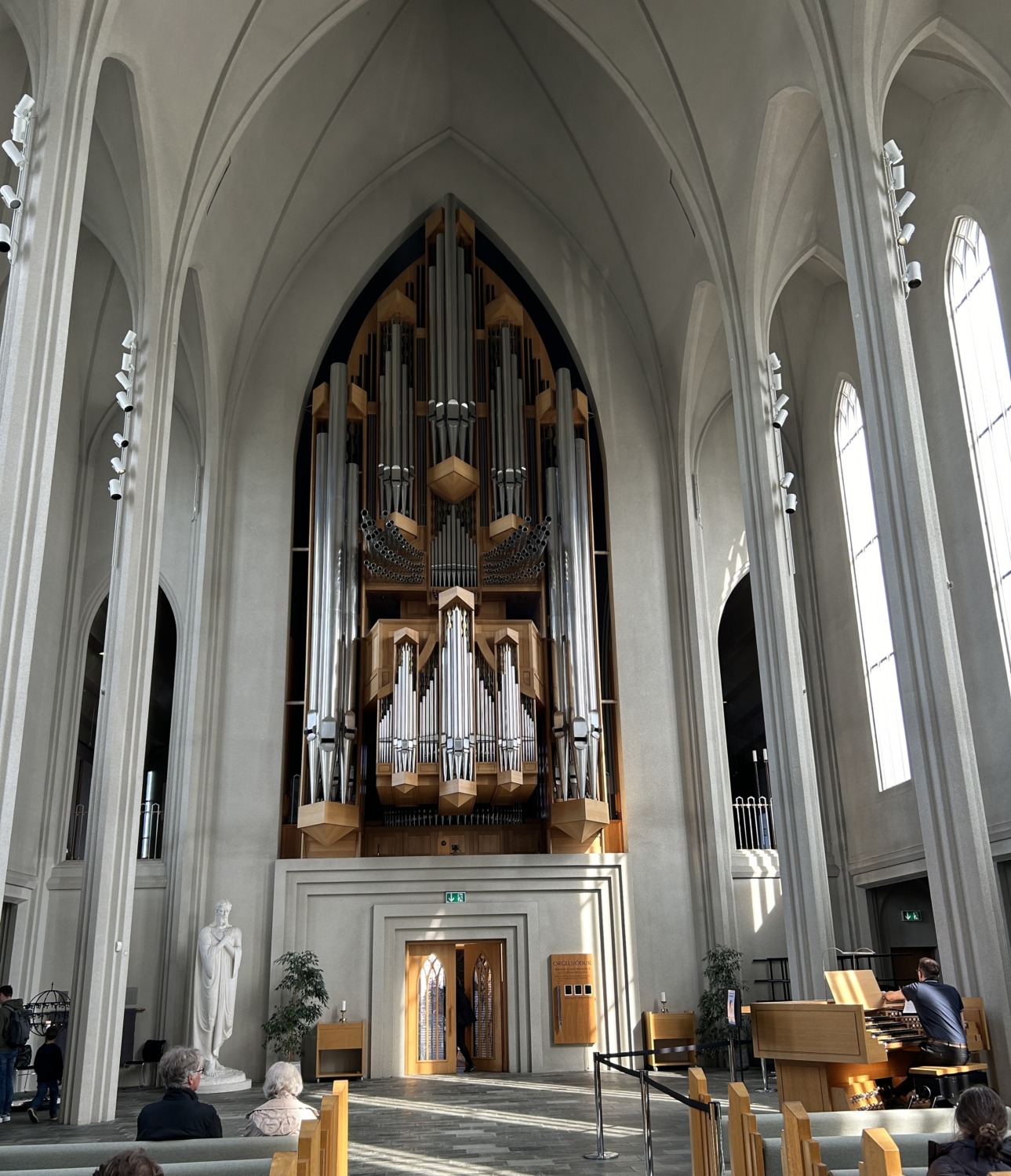
The outside of Hallgrímskirkja is beautiful, but the inside is very plain. There isn’t any decoration, and the lines of the church reflect the stark beauty of the landscape in Iceland. The church was built in 1966 and has become a symbol of Iceland. Even though Icelanders do not attend church very often, Lutheranism is still the state religion.
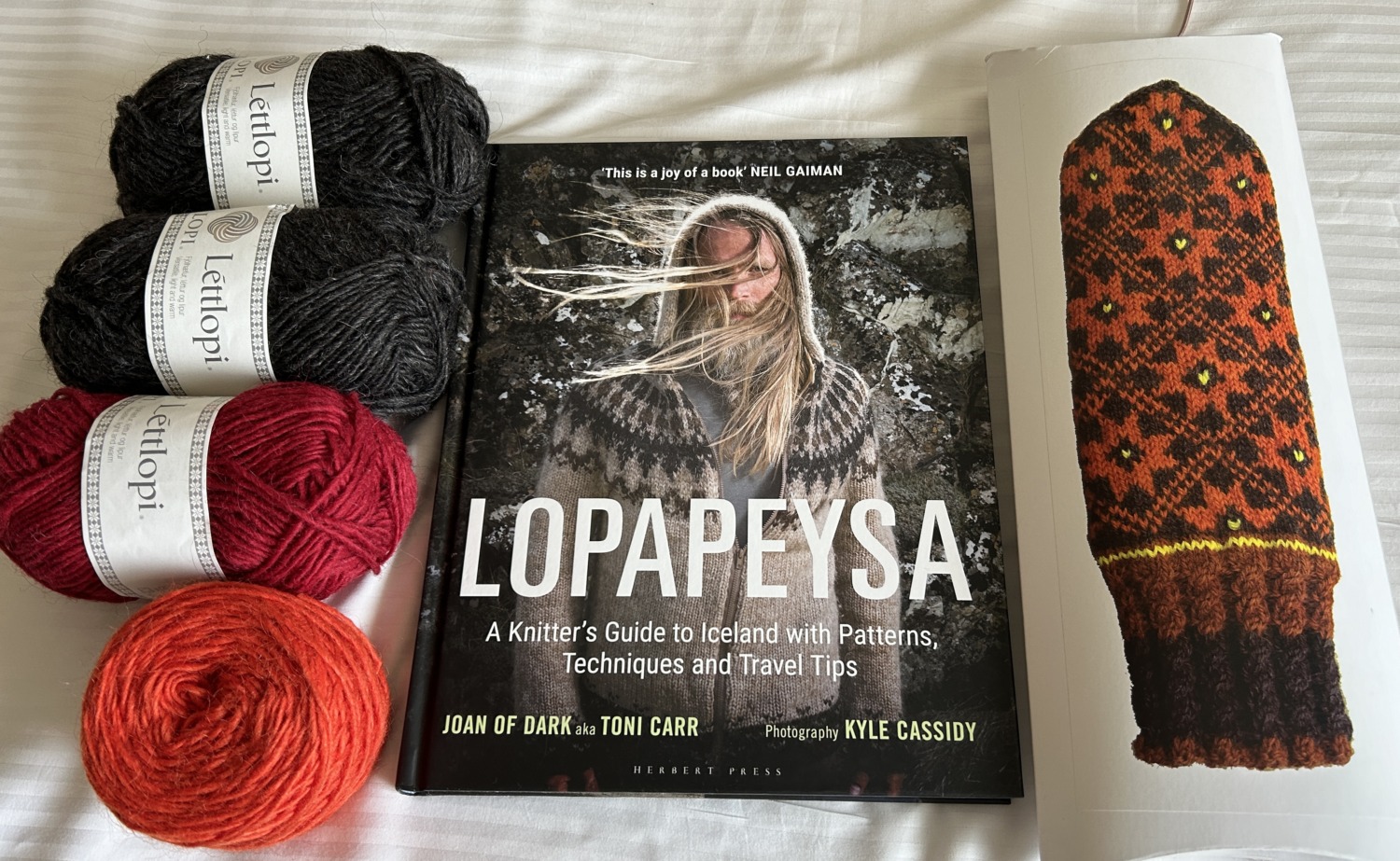
The downtown area is full of souvenir shops. Tom and I had saved a lot of our souvenir shopping for this time in Iceland, so we went in lots of shops. I had to go into the Handknitting Association of Iceland to see the items made from Icelandic wool. I bought some Lettlopi yarn in volcano colors so I can make a hat and some mittens. Istex Lopi yarn is made from Icelandic sheep and processed and dyed completely in Iceland. I also found a book about a yarn journey through Iceland.
Tom was, as usual, looking for a sweatshirt. He found one he liked well enough to try on. Unfortunately it was too tight in the right length and too long in the right width. Oh well.
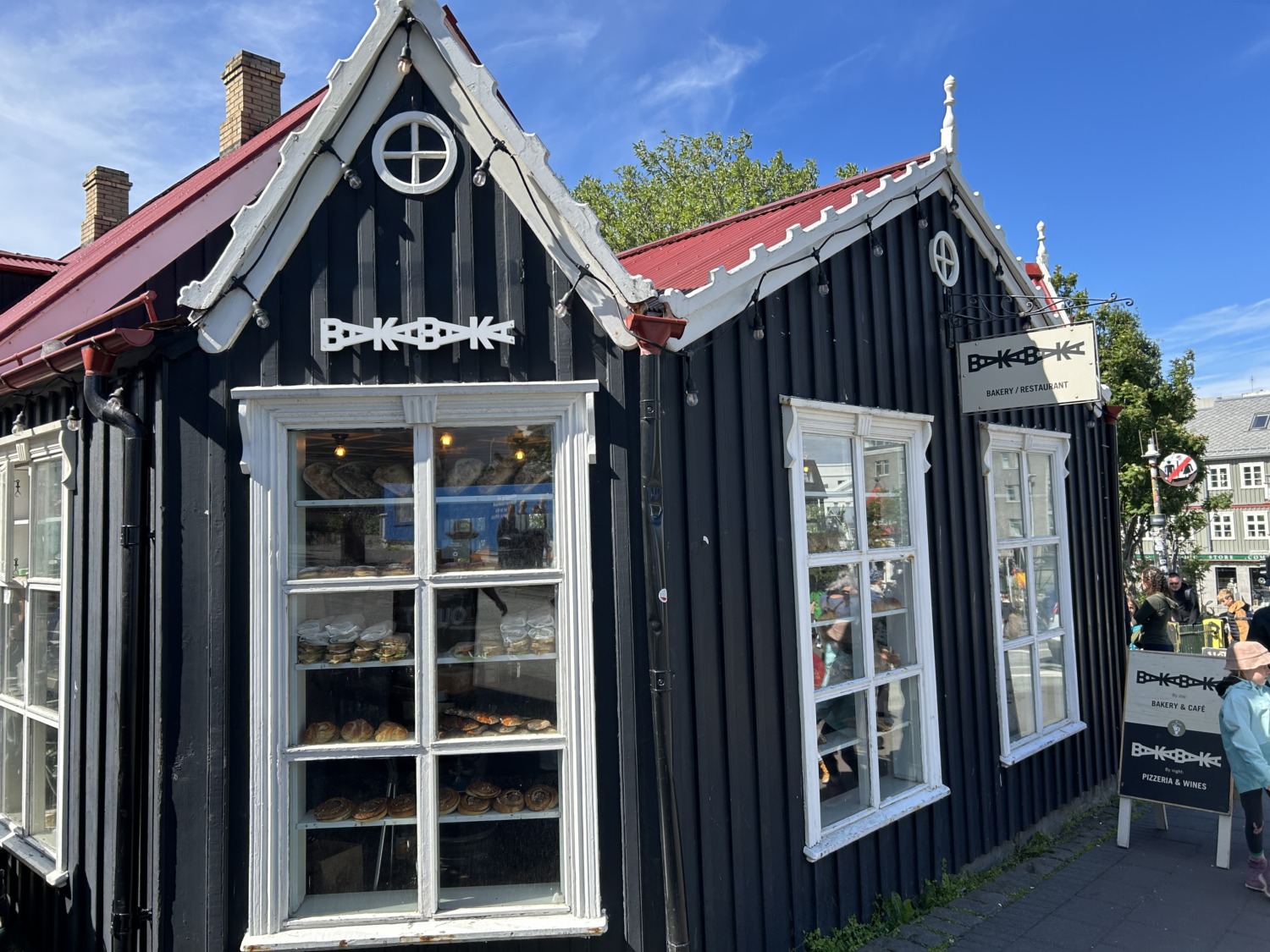
We found a bakery, Bakabaka, and got a chocolate roll and chocolate chip cookie for lunch. Both of them were delicious. We went back a couple of hours later to get some cookies to take back to the ship. We got the last two cookies and they were sold out of the chocolate roll and lots of other things. They were getting ready to switch over to their evening menu, which is pizza and wine.
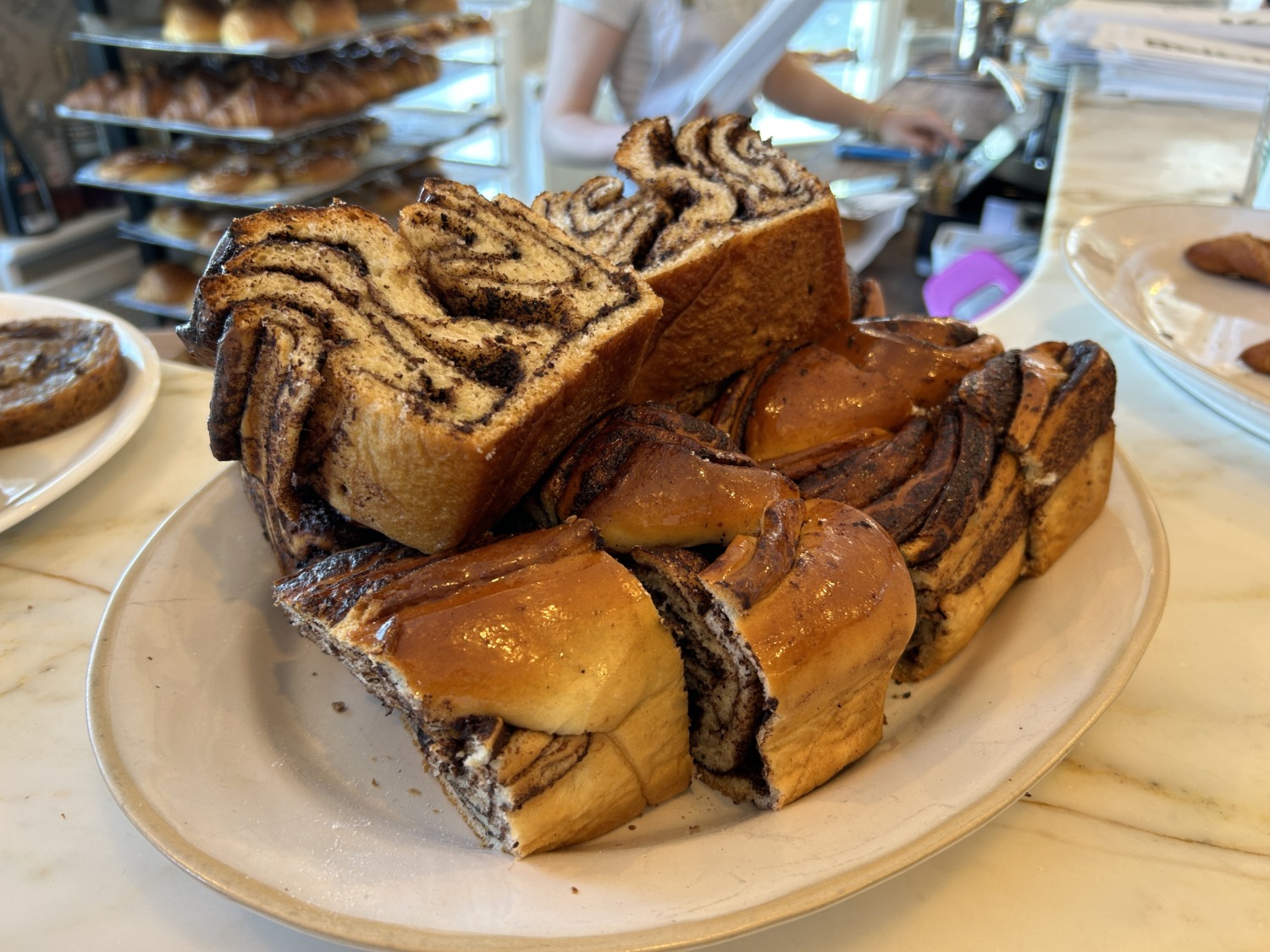
After our light and sugary lunch, we headed up the road to the National Museum of Iceland. The Museum was easy to get to, but not so easy to find. There was nothing on the road that designated where the museum was. When we got to the building we thought was the museum, we walked around three sides before we found a sign. Then we had to walk to the fourth side to find the unmarked entrance. I guess all the people who live in Iceland know how to get in.
The National Museum of Iceland is excellent, once you figure out how to get in. It is laid out chronologically. Each of the displays has a number, and if you follow the numbers you move seamlessly from 874, when Ingólfr Arnarson arrived, to the present day. We saw how the Icelandic language evolved from runes, how Christianity became important, and how the early settlers lived. There were lots of interesting artifacts.
The second floor took us from Settlement to Danish rule. The third floor took us from Absolutism under Danish rule to Independence and the modern age. 2024 is the 80th anniversary of Icelandic independence and there was a very interesting display on the original Independence Day celebrations on June 17, 1944. The celebration was held at Thingvellir National Park, where the Icelandic parliament had met since 930. Even though it was raining like crazy, the adults who packed into the park were so excited about independence that they barely noticed.

The thing I found most interesting in the museum was the traditional Icelandic women’s clothing. Specifically the distinctive and tall white hat called the krókfaldur. The krókfaldur is a very odd hat and reminds me of a flat conehead. It was a white piece of linen starched to stand up with a curve and held in place with wire. Usually the women would wear a translucent scarf over it. The richer they were, the higher the krókfaldur. This was part of the traditional dress of Icelandic women from 1700 until 1850 when a simpler style of hat was introduced.
After our fascinating visit to the museum, Tom and I walked through a couple of parks on our way back to the shuttle bus that would take us to the cruise port. The first was Hljómskálagarðurinn, a lovely green space with Tjornin Pond next to it. We could see the Parliament House on the other side of the pond. Then we walked through another park on a hill with a statue of Ingólfr Arnarson. His farm was near the park.
When we got back to the shuttle bus stop, there were hundreds of people waiting. Fortunately shuttle buses were coming by every five minutes. I insisted in standing in “the line” (Tom said it wasn’t a line) and it was a good thing I did. The next shuttle bus pulled up and one of the doors opened right in front of where we were standing. We climbed on immediately and even got a seat.
Although Tom and I were ready to go back to the ship, we thoroughly enjoyed our time in Reykjavik. In fact, our entire visit to Iceland was wonderful. Iceland is stark, lonely, wild, and very beautiful. The Icelanders are interesting, resilient, and tolerant. If you ever have a chance to go, seize it immediately. Spend at least a week and I know you will have a wonderful time. And, unless you really want to see the northern lights, go in the summer.

